Fermented Carrots
The way I ferment carrots is different from the way I usually ferment other vegetables. I’ve done quite a few fermented carrot recipe tests using traditional wild fermentation techniques, and I wasn’t too fond of them. They usually tasted yeasty and effervescent. So I turned to my other favorite method of fermentation called wild heirloom culturing. Which is more like making quick pickled carrots, but with probiotic left over brine from sauerkraut.
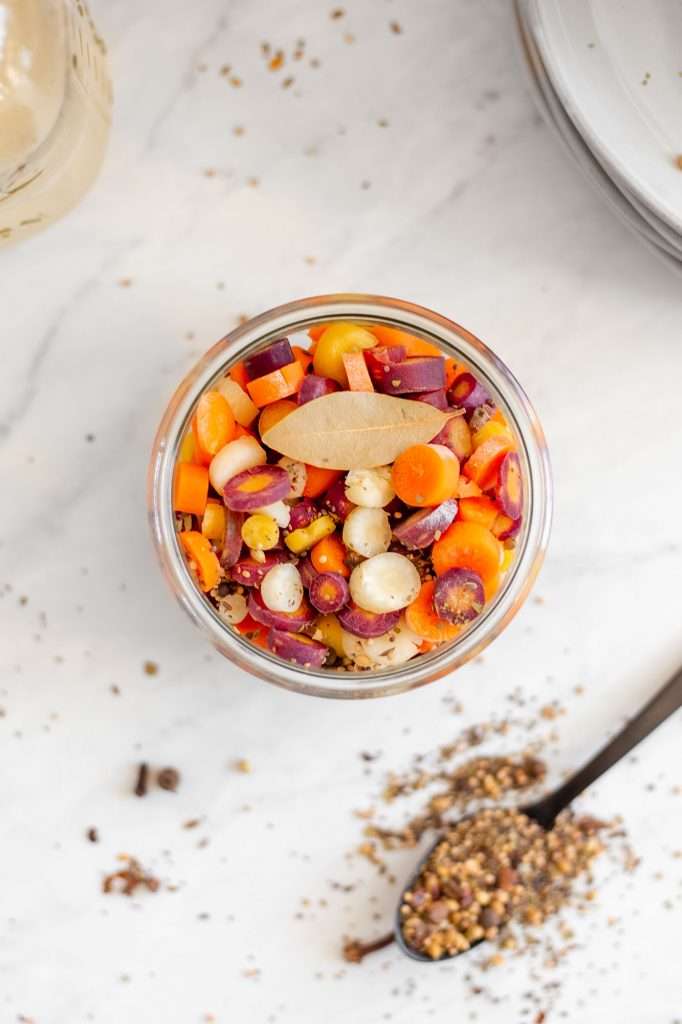
Quick Pickled Carrots
My wild Heirloom culturing method uses sauerkraut brine (or any fermented vegetable brine) and apple cider vinegar to ferment fresh vegetables using wild heirloom cultures found in the fermented sauerkraut brine.
This method of fermentation is more similar to yogurt fermentation than it is to something like sauerkraut fermentation… and it’s very similar to refrigerator pickling (aka quick pickling), but with beneficial microbes included. Now, it does take a little longer than a straight vinegar quick pickle. Kind of like in yogurt culturing, you need to give the microbes a little time to ferment the carrots.
Options for Fermenting Carrots
You can use this recipe to ferment carrots with any mix of spices and additions you like. So you can add in some garlic, or some jalapeno to put your own twist on it. Just keep the total weight of vegetables at 300 grams in the recipe.
You can wild ferment carrots in a salt brine if you want, it’s just my preference to do it this way. If you can just dump already acidic brine with a lot of Lactobacillus already present, you can skip the first two stages of wild fermentation (you know the part with all the bubbles). Lactobacillus bacteria only make lactic acid, they can’t make alcohol. So the carrots will still ferment, but only the desirable homolactic fermentation occurs.
How to Quick Pickle Carrots with Sauerkraut Brine
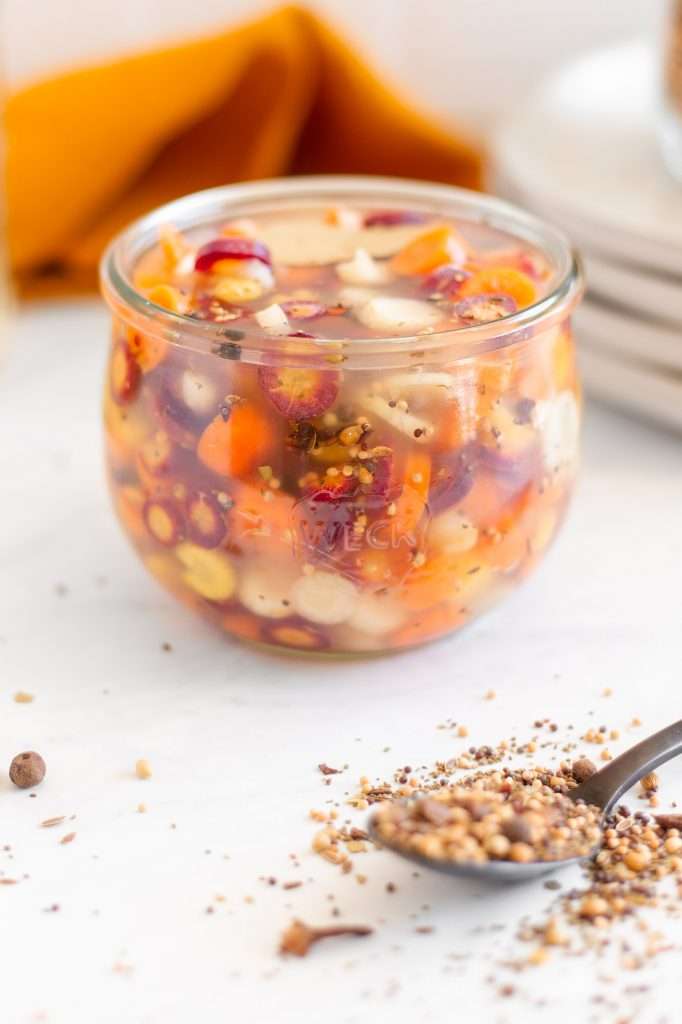
Probiotic Quick Pickled Carrots Recipe
Here are the ingredients will need to make low-sodium fermented carrots:
- Sauerkraut Brine (the liquid from already fermented sauerkraut)
- Rice Vinegar or Apple Cider Vinegar
- Carrots
- Pickling Spices
This is a different kind of vegetable fermentation: You are culturing the carrots using sauerkraut brine, so you only need to ferment them for 48 hours, then place them in the fridge.
Always Trust your sense of smell: Fermented carrots should smell pleasantly sour and a bit carrot-y. Never eat anything that smells repulsive.
Never eat anything that had mold growing on it: By following directions you should not encounter this problem.
Taste test at 48 hours: If you prefer the Carrots to be more tart and sour, let them sit in the refrigerator for a few days before eating.
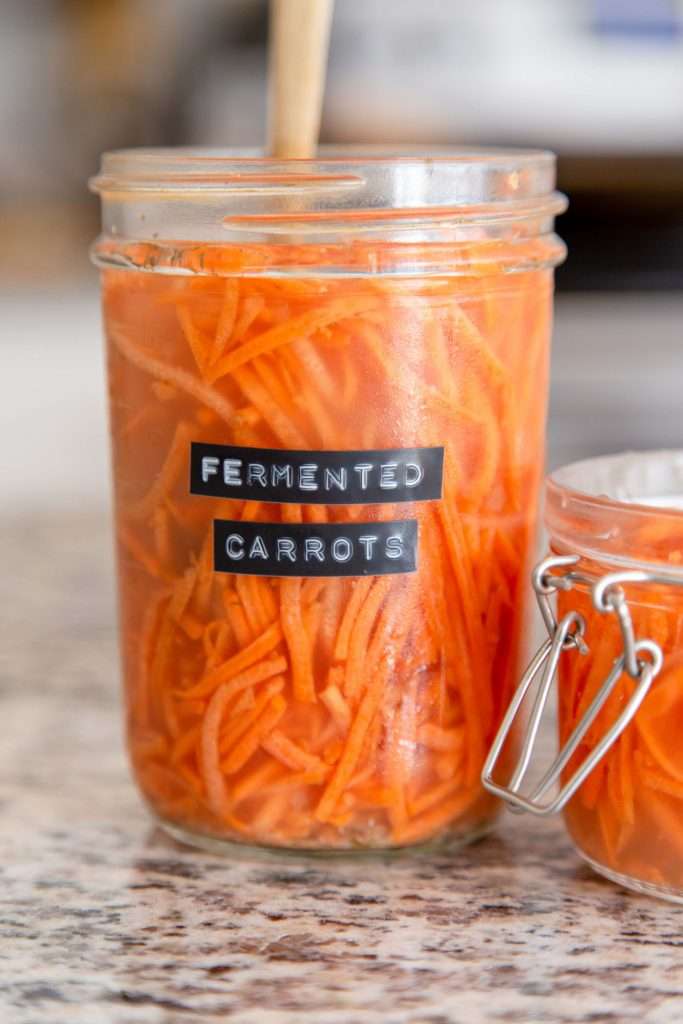

Fermented Carrot Sticks
This recipe is great with carrots cut any way you like. I’ve even used already cut bags of carrot matchsticks to make this recipe, with great results.
Peeling your carrots is also optional. I often make this recipe with unpeeled, very fresh carrots from my garden. Since carrots grow in the soil, it is a good idea to scrub them well if you aren’t going to peel them.
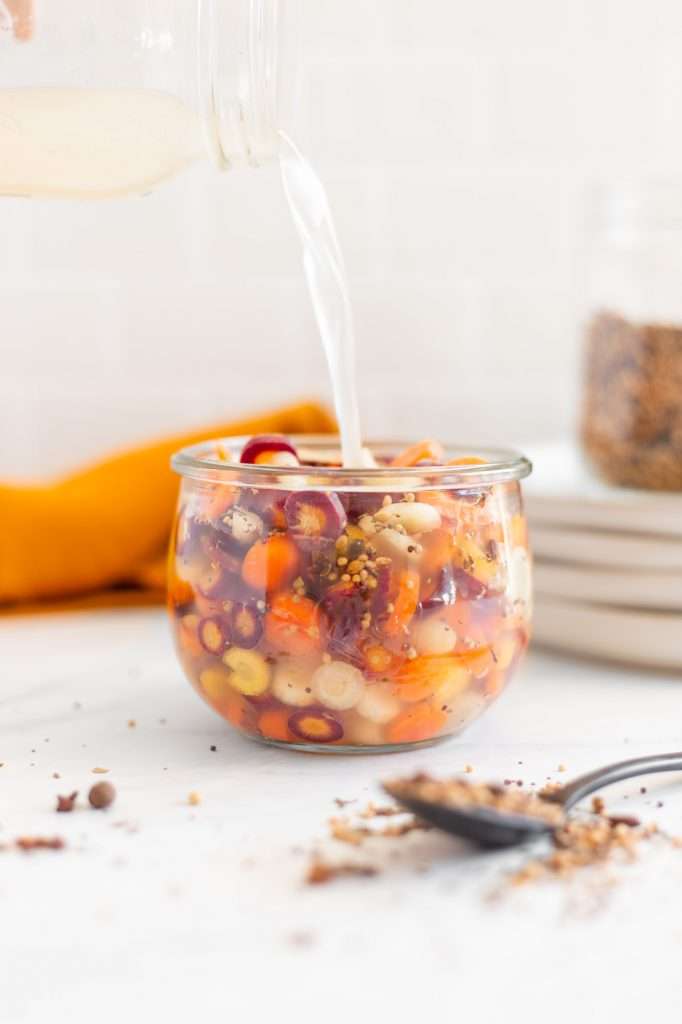

Easy Fermented Quick Pickled Carrots
How do you make quick pickled carrots that are also fermented? Just grab fresh carrots, sauerkraut brine, apple cider vinegar—add garlic or jalapeños for extra flavor!
- Prep: 10 minutes
- Total Time: 10 minutes
Ingredients
- 300 Grams Carrots, peeled and chopped
- 5 Grams Unrefined Sea Salt
- 175 Grams Fermented Sauerkraut Brine
- 75 Grams Raw Apple Cider Vinegar
- 2 Cups Boiling Water
Instructions
- Wash your fermentation equipment (jar, weight and lid)
- Wash your chopped carrots in cool water. (You can chop them, grate them, cut them to whatever consistency you’d like).
- Place your kitchen scale on the counter. Turn it on and set it to weigh in grams.
- Place a mixing bowl on your kitchen scale and tare/zero the scale.
- Add chopped carrots into the bowl on your scale until the scale reads 300 grams.
- Add about two cups of boiling water to the carrots and blanch for 3 minutes. Immediately strain after three minutes, and put aside.
- Place your empty, clean mason jar on the scale, and tare/zero the scale. add 175 grams of sauerkraut brine and 75 grams of apple cider vinegar to the jar.
- Add the 300 grams of carrots, into the mason jar.
- Place a small bowl on your scale and tare/zero the scale. weigh out 5 grams of salt. Then add the 5 grams of salt to the jar of carrots.
- secure the lid on the jar and shake the jar vigorously for 2 minutes.
- Remove the lid; place your fermentation weight in the jar, making sure to submerge the carrot pieces and weight fully in the liquid.
- Secure the lid to the mason jar.
- Ferment for 48 hours. Then remove the weight, put the lid back on the jar, and store in the fridge.
Notes
- Taring/zeroing the scale with a container on it subtracts the weight of the container, allowing you to weigh only what is added to the container. After taring/zeroing the scale, the scale should read 0.0 with the container on it.



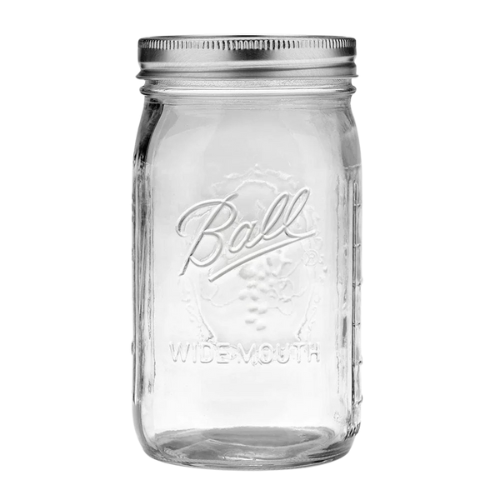
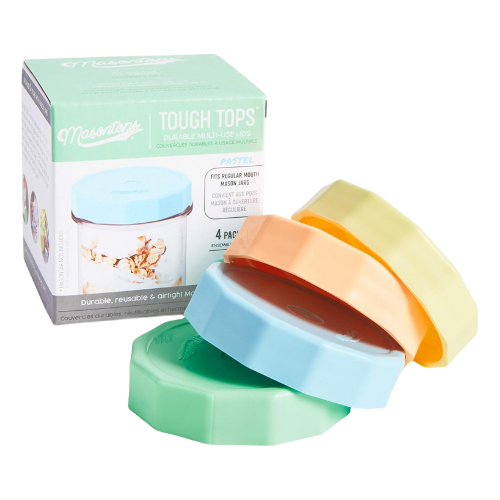
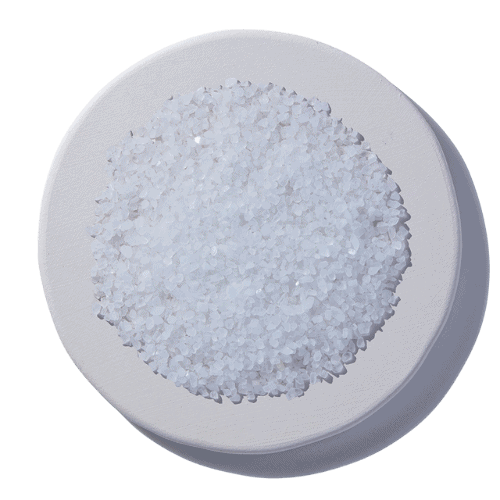
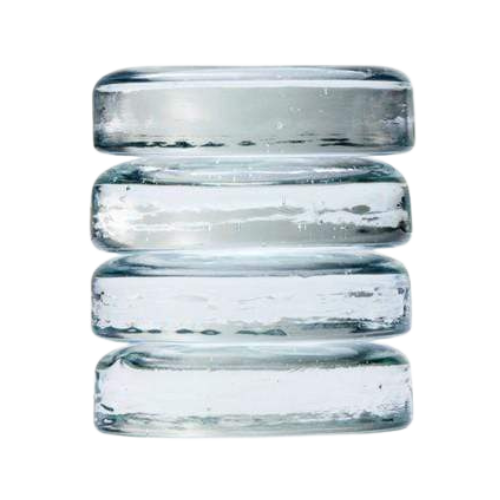


















Why is this a shorter amount of time? The time when you do it is four weeks for sauerkraut.? Thank you
Because this is a different process called wild heirloom culturing. I explain this process in the blog post, right above the recipe.
Thanks for the great article. You mentioned in the beginning that the type of salt makes a difference however you didn’t elaborate. I would love to hear your thoughts on how not all salts are equal!
I suggest using the methods I’ve already explained in this blog for low sodium fermentation. I don’t give other people’s processes or methods any kind of “stamp of approval” for free.
So I’m sorry, but I’m not going to validate or verify what you are trying to do. On this blog, I teach processes I have designed and studied extensively.
If you want to experiment using your own techniques that are not included here, you can do so at your own risk. I’m going to tell you what any person of science would tell you, I do not have enough evidence and I have not studied the process you are presenting so I cannot give you a solid answer.
Is 3-4 days vegitable fermentation at 20-25 degree Celsius produce Probiotics strain ?
For this recipe specifically, the fermentation time is short because we add the bacterial strains via fermented sauerkraut brine. When wild fermenting vegetables (which is a different process than the recipe outlined here) it takes 14-21 days.
By pouring off the brine and adding vinegar, does the vinegar kill the probiotics?
Nope, the microorganisms involved in wild fermentation tolerate lactic acid and acetic acid (vinegar) very well! They love acidic conditions.
I’d be very curious for a set of low sodium fermentation recipes, as a heart patient with inflammatory / autoimmune condition. You might reach out to your national heart association / foundation and see if there’s an opportunity to work on diet-related products with them.
Thanks for the feedback! We have loved ones who need low sodium fermented food options too, so we will add more low-salt fermentation recipe options here.
I would be very interested in more low sodium recipes too!!! Thank you for all this information!
What if you pasteurized the veggies first in a sous vide bag, then introduced acid with petty low salt and live lactobacillus directly? Could that solve the sodium problem?
It would depend on the source of the acid, the final acidity, and the source of the live Lactobacillus. But it sounds like it could work. No guarantees though, as I’ve never tried something like this myself. You’d have to experiment at your own risk.
Could pickles be substituted for the carrots in low sodium technique?
I’ve never tried it because I prefer wild fermented pickles… but it should work. You do not need to blanch the cucumbers.
Hello 👋
I am wondering if using Kombucha vinegar would be okay? Or is it not acidic enough?
Thank you for creating this site. I have to be careful with sodium and been trying to find a low sodium way to keep fermenting! I love that it’s science based 👍
It might work, Kombucha vinegar should be about the same acidity. I’ve never tried it though! Let me know if it works for you!
Hello, stumbled across your post. I am an avid amateur for about three years and am realizing that while my efforts have mostly been successful, I need to measure! I am educated but not in science.
Most notable failures? Asparagus.
And tomatoes.
Black beans and rice
Moderate? Garlic. Onions.
Kimchi. And green onion Kimchi.
Beet and mushrooms mostly good.
Best attempts have been with kraft. Mostly green. Some red. Some blended. Some red with red onions
And Tabasco peppers.
But I’ve not measured. Nor kept a journal. Thinking I need to make a change.
Thanks!
Could you reuse the brine from this recipe for another batch? First batch turned out great! We love them!
Yes! you can reuse the brine. I do it all the time.
To reuse the brine from a first batch, what adjustments do you need to make to the recipe for a second batch?
Hello Kaitlynn! Could this work with horseraddish too? or eventually mix of carrots and horseraddish? I am not quite sure whether to wild ferment it or go for to your heirloom method.
Thank you
Yes! I think so. I think the heirloom method would work best 🙂
Why are the carrots blanched? Why not just use them from the raw state?
I like the texture and flavor better when they are blanched. You can use raw carrots.
Have you ever finely shredded carrots? One of the first batch’s of fermented carrots I did was this way only because I would feed my kid raw carrots early on to avoid a choking hazard. Oddly I didn’t have the same wild ferment experience that you seem to have had. I’ve had it with tomatoes or blueberries. Not carrots. Would it have to do with salt content or how much you disrupt the cell structure by shredding vs. chopping? I’m not a scientist, maybe you have a guess why that would be? I have a few of your recipes in the works currently and a few I’ve riffed on. (Blueberry, lavender sauerkraut) and (Apricot curry sauerkraut) Thanks and be well!
Hi there! Thanks so much for this recipe! I made it in May and then left the brine in the fridge while we were gone for an extended period. I just added carrots to it today and at wondering if that will be ok? I saw another comment that you can reuse the bribe but I wondered – should it sit out for 48 hours or go straight into the fridge? And how many times can bribe be reused? I have added new pickles to store bought quick pickles and it seems like they taste good once and then are done. Sorry for multiple questions here! I’m just getting started and love your blog and recipes!
You can reuse the brine! I suggest adding more vinegar as you go and treating them like refrigerator pickles, so straight into the fridge.
Thank you!!
I absolutely love this recipe! I love how quick and delicious it turns out every time. I’ve been adding curry powder to it.
I have a question about it. Can you reuse the liquid and make the carrots again? Can you add the same amount of carrots to the liquid if you can use it again?”
yes! you can reuse the liquid brine a few times. Glad you love the recipe!
Thanks for the recipe! Could you please comment on using vinegar in a ferment? It makes sense to me that adding some is okay if you’re also putting in a sauerkraut brine that already has tons of lactobacillus, but I’ve read some places that vinegar can inhibit a ferment’s success. Do you have a rule of thumb regarding how much of the brine can be vinegar? Any details/info would be appreciated.
Thank you for sharing all of your knowledge! I’m just getting my feet wet in the fermenting world. Would I be able to substitute kimchi brine instead of sauerkraut?
yes! Kimchi brine will work wonderfully!